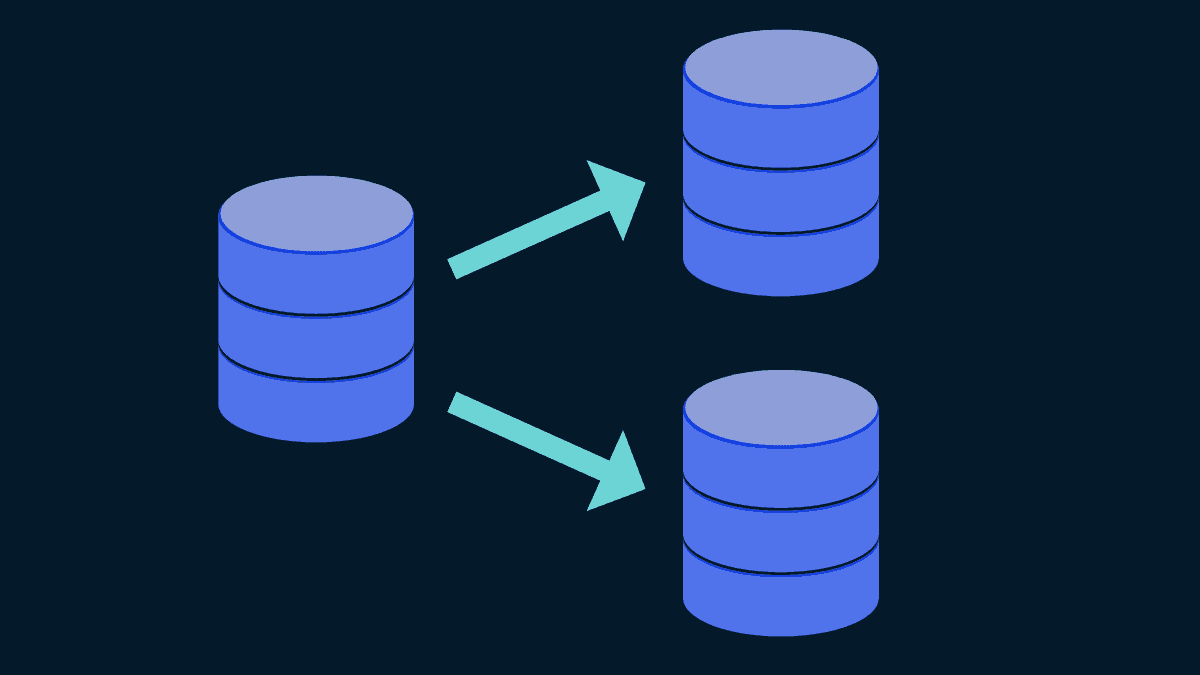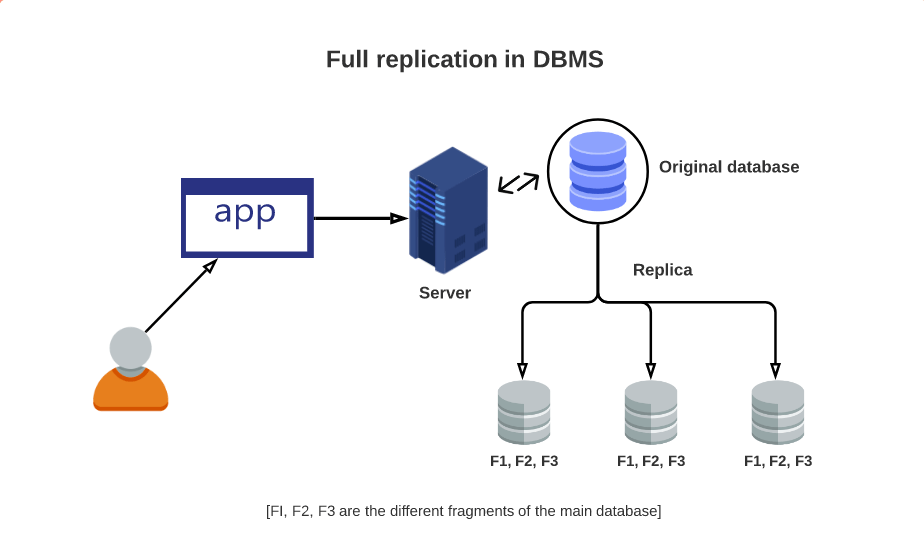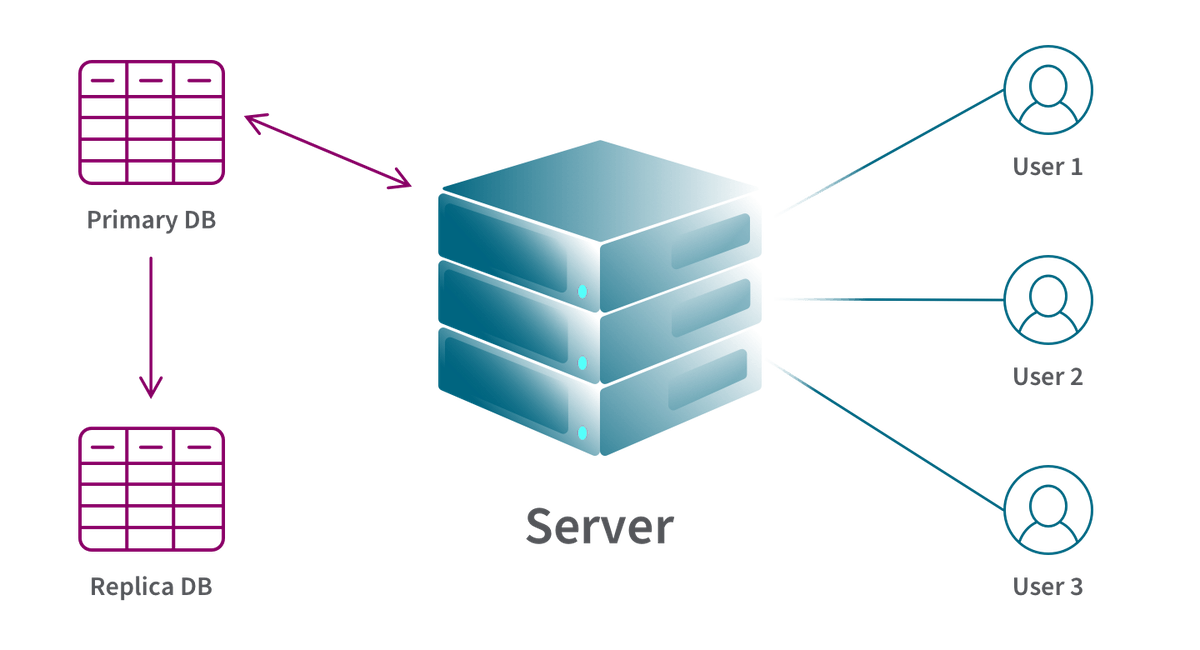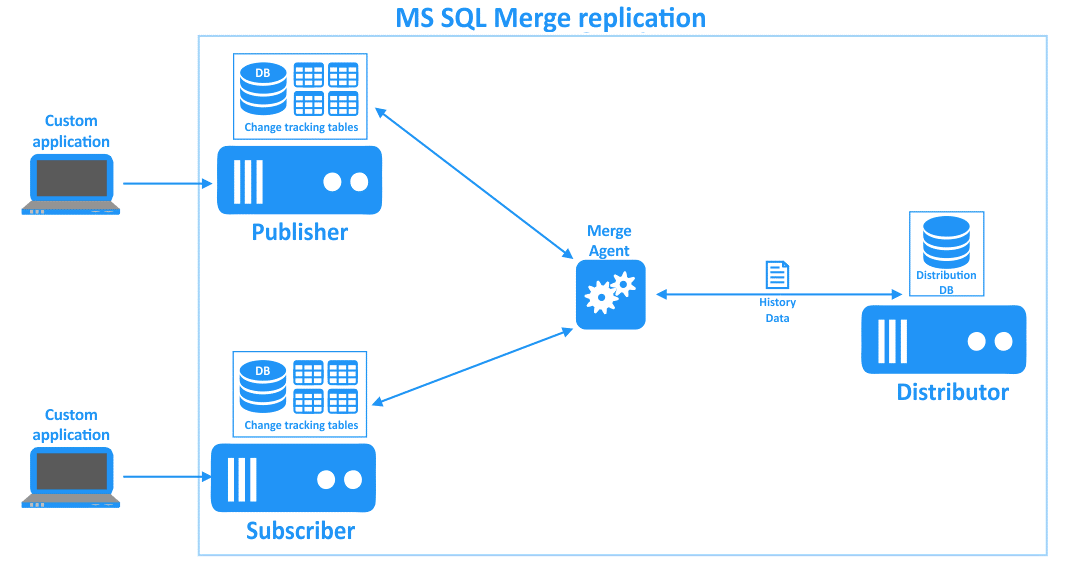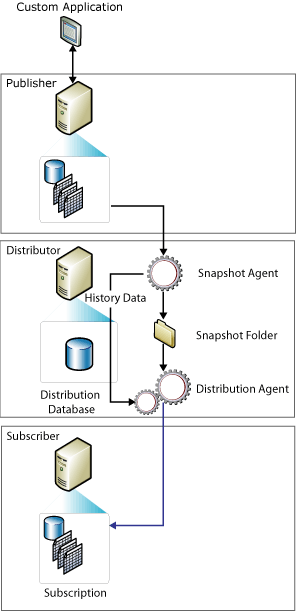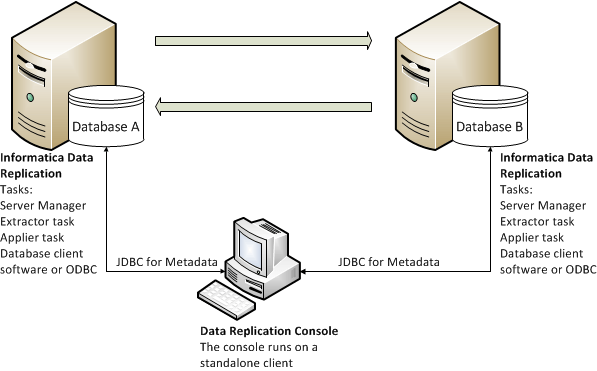
Organizations maintain a variety of heterogeneous databases, data warehouses, data lakes, and other big data platforms. These data storage platforms help organizations keep track of basic transactions and run the business more efficiently.
Organizations also have a complex set of networks in place and geographically spread out entities. These factors help them expand and serve a wide customer base.
For seamless operations, businesses need to access critical data in real time. This involves multiple departments in multiple locations being able to access the same dataset. The solution? The different types of data replication.
But first, let's get an understanding of what data replication is.
What is Data Replication?
Data replication means creating and storing multiple copies of data across different locations or servers. When you replicate data, you simply copy it from one location to another. You can use data replication for servers or even individual computers and store the replicated data on-site, off-site, or in a cloud environment.
With data replication, you can recover data from a backup location in case of downtime and ensure business continuity. It’s also beneficial for disaster recovery, like a system breach, hardware failure, or catastrophe.
Additionally, storing the same data in multiple locations helps improve data availability and accessibility.
Data replication can either be synchronous or asynchronous:
- Synchronous replication: Any changes you make to the original data will simultaneously apply across all replicas in real time.
- Asynchronous replication: You make changes to the original data first and later apply it across the replicas in batches.
Types of Data Replication
Here are the different types of replication to help you understand what could be a suitable choice for your data needs.
1. Full Table Replication
Image Credit: ManageEngine
Full Table Replication means you replicate the entire data. Everything, including existing, new, and updated data, is copied from source to destination. This is one of the commonly used techniques from the different types of replication.
With full table data replication, the replicated data is a mirror image of the original data, and nothing is missed. Creating replicas in different locations is especially useful so users anywhere can load an application’s content with low latency. Besides, this type of replication is a viable option for recovering deleted data or data without any replication keys.
However, this replication method has a few drawbacks, like higher costs due to the need for massive processing power and network bandwidth requirements. Since repeated use of full table replication of the same database uses more table rows, the cost also increases.
2. Key-Based Incremental Replication
Image Credit: Qlik
Key-based incremental replication is a replication method that replicates only new or updated data from a data source. It’s also called key-based incremental loading or key-based data capture.
This replication type involves using a replication key to identify, locate, and alter only the most recently updated data. There is a replication key column within the source database table. The replication key itself could be an ID, timestamp, float, or integer.
During replication, your replication tool collects and stores the last updated or maximum value of the replication key column. For the subsequent replication, the tool compares the stored maximum value with the maximum value of your source’s replication key column. The tool replicates the changes if the stored value is lower or equal to the source’s maximum value. And the stored value is updated to the source maximum value.
Since each update only involves copying a few rows of data, key-based incremental replication is more efficient and faster than full table replication. However, when you delete the data entry in your table, the key value also gets deleted. Hence, hard-deleted data won’t be replicated.
3. Merge Replication
Image Credit: Nakivo
Merge replication is combining data from several sources into a single database. You can unify data distributed across multiple sources and synchronize it in one place.
Merge replication is commonly used in server-to-client environments like mobile apps, where you must incorporate data from multiple sites. This replication type is complex since the subscriber and publisher can make changes to the database independently.
Additionally, merge replication lets changes from one publisher be sent to multiple subscribers.
If the publisher or subscriber makes offline changes to the data, merge replication helps avoid any data conflicts upon synchronization with the server. It lets you configure a set of rules to resolve such conflicts.
The replication process begins with a snapshot of the data for replicating the data in the destination databases. This process helps maintain data synchronization within the entire system. If anybody makes independent changes to the data at one node, merge replication merges all the updates.
Merge replication is suitable if you’re only concerned with the data object’s latest value, not how many times it’s been changed. It works well to avoid data conflicts in your database.
4. Snapshot Replication
Image Credit: Microsoft
Snapshot replication works by taking a snapshot of the data at the primary source as it appears at the moment of the replication process. This snapshot is then mirrored into each replica. Snapshot replication is an excellent choice for initial synchronization between the original data source and replicas.
As the data is replicated as it appears at any given time, snapshot replication doesn’t monitor for any updates to the data. Hence, it isn’t a good replication strategy to make a backup.
Also, in the event of a storage failure, the replication won’t have a path to the updated information. Neither will any deletes to the source get replicated. This is because the deleted data might not be in the source when the snapshot was taken. However, it’s a helpful replication technique for data recovery in the event of accidental deletion.
Consider using snapshot replication if your source database doesn’t update frequently and the data you want to replicate is small. On the other hand, replicating a considerably large dataset from the source might require high processing power.
Snapshot replication is the simplest to use among the different types of replication.
5. Transactional Replication
Image Credit: Microsoft
Transactional replication means you duplicate all the existing data from the source into the replica at the destination. Any subsequent changes to the source data reflect in the replica in near real-time and in the same order. Hence, this type of replication ensures transactional consistency.
The replication takes a snapshot of the source data. Then, it uses the snapshot as a blueprint of what needs to be replicated elsewhere. This process allows you to track and distribute only the required changes. Not only does it copy the data, but it also replicates each change accurately and consistently.
In transactional replication, the replicated data at the subscribers' end is mainly used for read-only purposes. Hence, this replication strategy is commonly used in server-to-server environments. The process helps improve performance and decrease latency for high-volume reads, writes, or deletes.
It’s also a good choice for replication in situations requiring real-time consistency across all the data locations.
Consider transactional replication if your database changes frequently and you require up-to-date data to perform analytics. And, if your business can’t afford a downtime of more than a few minutes, this is a good choice among the types of replication.
6. Bidirectional Replication
Image Credit: Informatica
Bidirectional replication is a specific type of transactional replication. Two databases or servers can swap their data and exchange changes with each other. That means any changes to one copy of a table get replicated to a second copy of that table. Simultaneously, any changes in the second copy of the table are replicated back to the first copy. However, both databases must be active for a transaction to be successful.
Since applications on either server can update the same table rows simultaneously, it might lead to a conflict. If a dispute occurs, you can choose which table copy wins or which database updates are reflected first.
If you want to use your databases' full capacity and provide disaster recovery, bidirectional replication is a perfect choice.
7. Peer-to-Peer Replication
Image Credit: SQLShack
Peer-to-peer replication is where all participating servers can send and receive data. It means that each server can act as a master and a slave. And the data updates on the servers happen in near real-time.
The peer-to-peer replication process is based on transactional replication. This means that all nodes in the same network constantly transact or send data to one another. In the process, the database is synced with all corresponding nodes. If you change the data from anywhere worldwide, it will reflect in all other nodes. Hence, it results in real-time consistency.
Peer-to-peer replication is beneficial for web applications. With its flexibility, the number of users can be scaled without any impact on performance. Also, servers can shut off for maintenance, making the system more robust.
8. Log-based Replication
Image Credit: Striim
It isn’t uncommon to see some databases storing transactional logs for several reasons. In log-based incremental replication, your replication tool looks at database logs. The logs provide information about changes like updates, inserts, or deletes to the source data. Once the tool identifies changes to the source data, it replicates them in the destination data.
Rather than replicating the entire dataset, only the changes are replicated, making this process more efficient. And, since any changes at the source are consistently stored in logs, you can trust that you won’t miss any critical business transactions.
Despite the benefits of this data replication strategy, it also has some drawbacks. First, you can only apply it to databases like MySQL, MongoDB, and PostgreSQL that support binary log replication. And if the destination server is down, you must maintain up-to-date logs until the server is restored. Else, you might lose crucial data.
Log-based replication is a central concept in change data capture (CDC).
Conclusion
Now that you’ve read and understood the different types of replication, you can choose the kind suitable for your business needs. Regardless of your application type, there’s a data replication strategy for you.
And here’s the best part—you can combine different types of data replication strategies. Although, if you do, ensure that the combination is more efficient for database replication, as per your business objectives.
You can also use a data pipeline platform to take care of replication for you, so you don’t have to engineer a data replication solution yourself. Estuary’s platform, Flow, combines a variety of data replication strategies to help you unite your many data systems around a single source of truth, in real time. You can try Flow for free here.

About the author
With over 15 years in data engineering, a seasoned expert in driving growth for early-stage data companies, focusing on strategies that attract customers and users. Extensive writing provides insights to help companies scale efficiently and effectively in an evolving data landscape.





